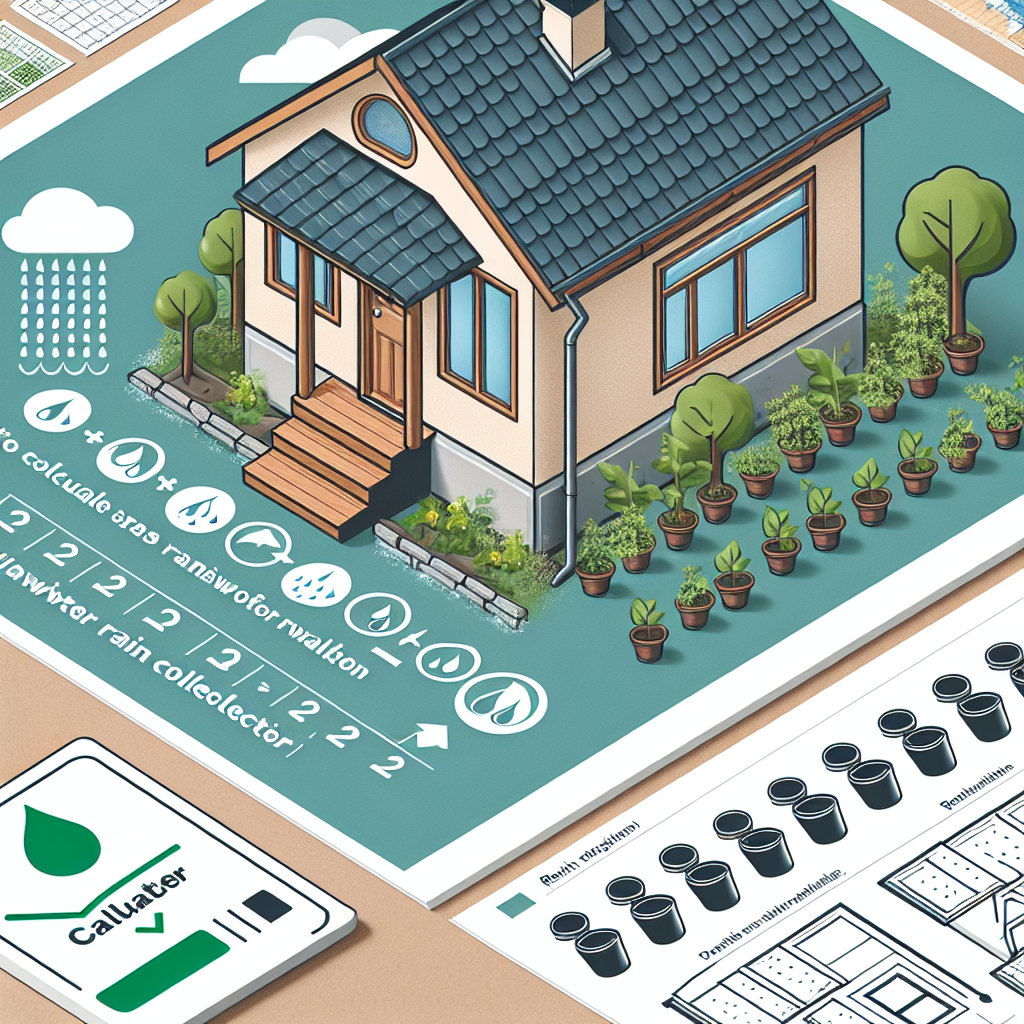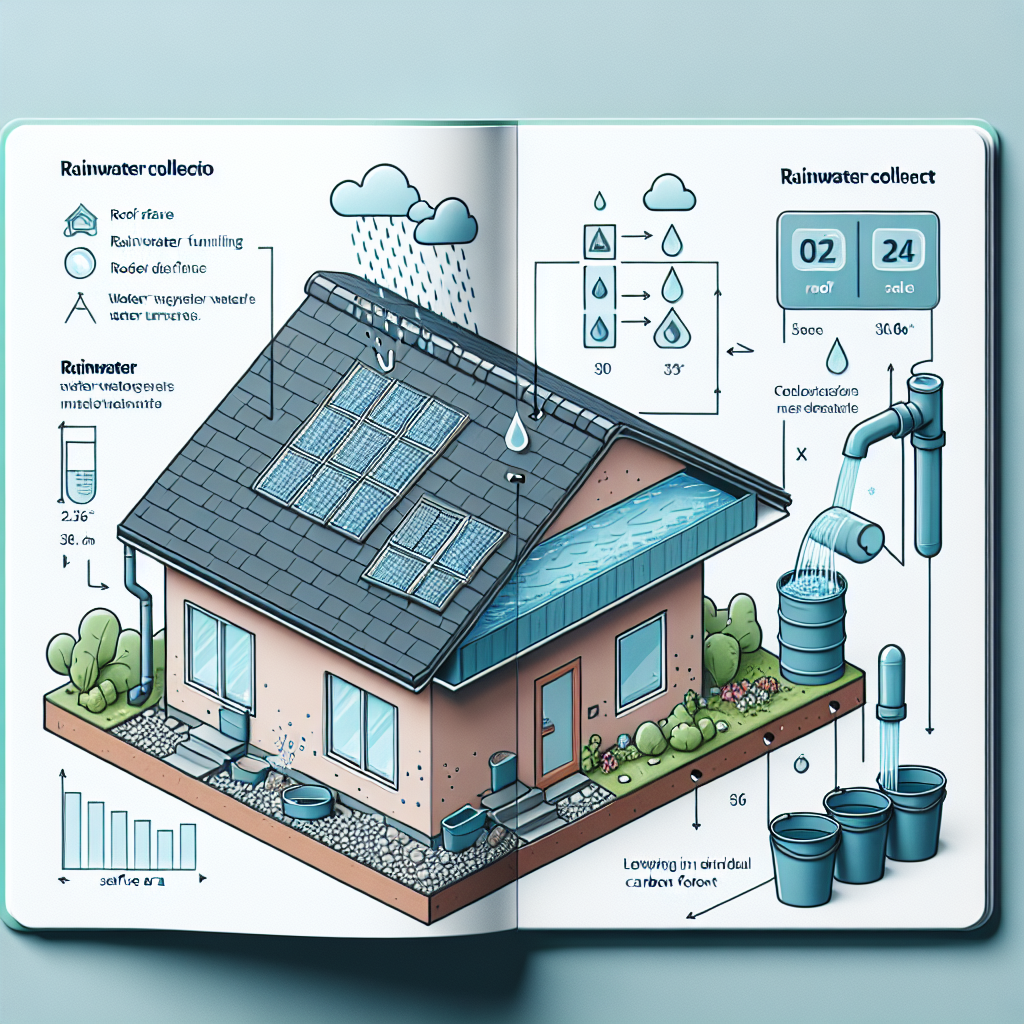 Broadband
Broadband
Calculating Rainwater Harvesting Potential from Your Roof
Calculating the potential for rainwater harvesting from your roof is an empowering step toward sustainability and environmental stewardship. To begin, it is essential to understand the basic principles of rainwater collection. The amount of rainwater you can harvest depends on several factors, including the size of your roof, the average rainfall in your area, and the efficiency of your collection system. By grasping these elements, you can make informed decisions that contribute to reducing your carbon footprint. First, measure the area of your roof. This can be done by calculating the length and width of your roof and multiplying these dimensions. For example, if your roof is 20 feet long and 15 feet wide, the total area would be 300 square feet. Next, consider the average annual rainfall in your region. This information can typically be found through local weather services or online databases. For instance, if your area receives an average of 30 inches of rain per year, you can convert this measurement into feet, which would be 2.5 feet. Now, to calculate the potential rainwater collection, you can use a simple formula: multiply the area of your roof by the average annual rainfall. In our example, 300 square feet multiplied by 2.5 feet of rainfall equals 750 cubic feet of water. Since one cubic foot of water is equivalent to approximately 7.48 gallons, you can further convert this figure into gallons. Thus, 750 cubic feet translates to about 5,610 gallons of rainwater that could potentially be harvested from your roof each year. However, it is important to consider the efficiency of your rainwater collection system. Not all the rainwater that falls on your roof will be collected due to factors such as evaporation, splashing, and the design of your gutters and downspouts. A well-designed system can typically capture around 80% to 90% of the rainwater. Therefore, if we take the previous example of 5,610 gallons, you might realistically expect to collect between 4,488 and 5,049 gallons annually. Understanding how much rainwater you can collect is not just a mathematical exercise; it is a vital step toward embracing a more sustainable lifestyle. By utilizing rainwater for irrigation, flushing toilets, or even washing clothes, you can significantly reduce your reliance on municipal water supplies. This shift not only conserves water but also lessens the energy required for water treatment and distribution, thereby reducing your overall carbon footprint. Moreover, rainwater harvesting can contribute to stormwater management, helping to mitigate flooding and erosion in your community. By capturing rainwater, you are not only benefiting your household but also playing a role in protecting local ecosystems. This interconnectedness highlights the importance of individual actions in the broader context of environmental health. In conclusion, calculating the potential for rainwater harvesting from your roof is a straightforward yet impactful process. By understanding the size of your roof, the average rainfall in your area, and the efficiency of your collection system, you can estimate how much rainwater you can collect. This knowledge empowers you to make sustainable choices that contribute to a healthier planet. As you embark on this journey, remember that every drop counts, and your efforts can inspire others to follow suit, creating a ripple effect of positive change in your community and beyond.Benefits of Rainwater Collection for Environmental Sustainability

Rainwater collection is an increasingly popular practice that offers numerous benefits for environmental sustainability, making it a vital component in the fight against climate change. By harnessing the natural resource of rain, individuals and communities can significantly reduce their reliance on municipal water supplies, thereby conserving precious freshwater resources. This practice not only alleviates the strain on local water systems but also promotes a more sustainable approach to water management. One of the most compelling advantages of rainwater collection is its ability to mitigate urban flooding. As cities expand and impervious surfaces increase, rainwater has fewer places to go, leading to overwhelming stormwater runoff. This runoff can cause erosion, water pollution, and even damage to infrastructure. By capturing rainwater from rooftops, we can reduce the volume of water that enters storm drains, thus minimizing the risk of flooding and protecting our urban environments. This proactive approach not only safeguards our communities but also enhances the resilience of our ecosystems. Moreover, rainwater harvesting contributes to groundwater recharge. When rainwater is collected and stored, it can be used for irrigation or other non-potable purposes, allowing the groundwater table to recover. This is particularly important in areas experiencing drought or water scarcity, where groundwater serves as a critical resource. By utilizing rainwater, we can help maintain the balance of our natural water systems, ensuring that both surface and groundwater resources remain sustainable for future generations. In addition to these environmental benefits, rainwater collection can also lead to significant cost savings for households and businesses. By reducing dependence on municipal water supplies, individuals can lower their water bills and decrease the demand for treated water, which is often energy-intensive to produce. This reduction in energy consumption not only saves money but also decreases greenhouse gas emissions associated with water treatment and distribution. As a result, rainwater harvesting becomes a practical solution that aligns economic benefits with environmental responsibility. Furthermore, rainwater collection systems can be designed to be aesthetically pleasing and integrated into landscaping, enhancing the beauty of properties while promoting sustainability. Rain gardens, cisterns, and decorative barrels can serve as functional elements that capture rainwater while also providing visual appeal. This integration of nature and technology fosters a deeper connection to the environment, inspiring individuals to take an active role in conservation efforts. As we consider the broader implications of rainwater collection, it becomes clear that this practice is not merely a personal choice but a collective responsibility. By adopting rainwater harvesting systems, we contribute to a culture of sustainability that encourages others to follow suit. Each drop collected represents a step toward reducing our carbon footprint and promoting environmental stewardship. In a world facing the challenges of climate change, water scarcity, and habitat degradation, every action counts. In conclusion, the benefits of rainwater collection extend far beyond individual households. By embracing this practice, we can collectively work towards a more sustainable future, one where our natural resources are preserved, our communities are resilient, and our impact on the planet is minimized. As we look to the future, let us be inspired by the potential of rainwater harvesting to transform our relationship with water and foster a healthier, more sustainable world for generations to come.
Steps to Maximize Rainwater Collection Efficiency and Reduce Carbon Footprint
Calculating the amount of rainwater that can be collected from your roof is an essential step in maximizing efficiency and reducing your carbon footprint. To begin, it is crucial to understand the basic principles of rainwater harvesting. The first step involves measuring the area of your roof, which can be done by calculating the length and width of each section and then multiplying these dimensions. Once you have the total square footage, you can estimate the potential volume of rainwater that can be collected. This is achieved by considering the average annual rainfall in your area, which can typically be found through local meteorological data. By multiplying the roof area by the average rainfall, you can determine the total volume of water that could potentially be harvested. However, simply knowing the potential volume is not enough; maximizing the efficiency of your rainwater collection system is equally important. One effective way to enhance collection is by ensuring that your roof is clean and free from debris. Leaves, dirt, and other materials can obstruct the flow of water into your collection system, leading to significant losses. Regular maintenance, such as cleaning gutters and downspouts, will help ensure that every drop of rain is captured. Additionally, installing a first-flush diverter can significantly improve water quality by diverting the initial runoff, which often contains contaminants from the roof. Moreover, the type of collection system you choose plays a vital role in efficiency. Rain barrels are a popular option for smaller homes, while larger systems may require cisterns or underground tanks. When selecting a system, consider the size of your roof and the amount of rainfall you typically receive. It is also beneficial to incorporate a filtration system to ensure that the collected water is clean and safe for use in irrigation or other non-potable applications. By investing in a high-quality filtration system, you can further enhance the usability of your collected rainwater. In addition to these practical steps, it is essential to consider the broader impact of rainwater collection on your carbon footprint. By utilizing rainwater for irrigation, you reduce the demand for municipal water, which often requires significant energy for treatment and distribution. This reduction in water usage not only conserves a precious resource but also decreases the energy consumption associated with water supply systems. Furthermore, using rainwater for landscaping and gardening can lead to healthier plants, as rainwater is typically free from the chemicals found in treated water. As you embark on this journey of rainwater collection, it is important to remember that every small action contributes to a larger goal of sustainability. By maximizing the efficiency of your rainwater collection system, you are not only making a positive impact on your immediate environment but also inspiring others to consider similar practices. Sharing your experiences and knowledge with friends and neighbors can create a ripple effect, encouraging a community-wide commitment to reducing carbon footprints. In conclusion, calculating and maximizing rainwater collection from your roof is a powerful way to contribute to environmental sustainability. By understanding the potential volume of rainwater, maintaining your collection system, and recognizing the broader implications of your actions, you can play a significant role in reducing your carbon footprint. Embracing rainwater harvesting is not just a practical solution; it is an inspiring step toward a more sustainable future for our planet.Recent Posts
- Rural Wales is fast becoming a hot destination for those seeking an escape from the city life but looking for the convenience of a modern developed country
- How to calculate how much rainwater can be collected from your roof and how rainwater collection is vital to reducing your carbon footprint
- Lifestyle Medicine is driving change in how people look after their health
- Why are natural foods locally sourced popular in rural areas?
- Why new home owners in the Yorkshire choosing organic fabrics to furnish their homes

